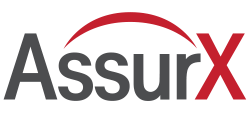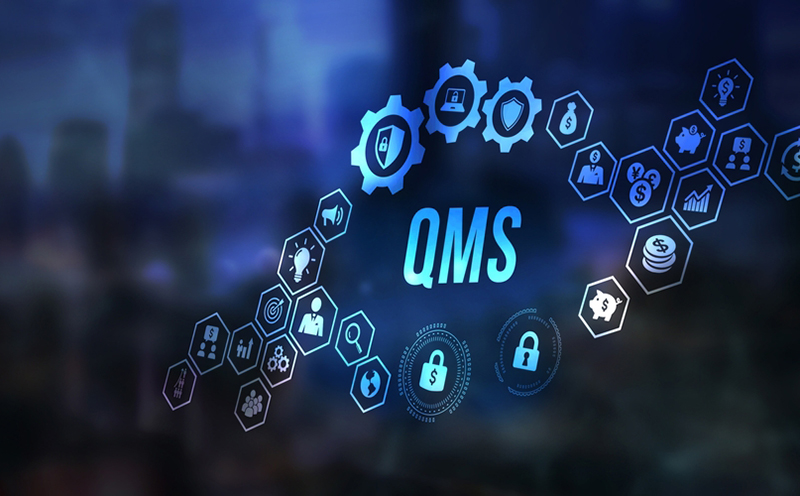October 22, 2025
Implementing a new quality management system (QMS) is no small task, especially for life science companies faced with stringent regulatory requirements and a high validation burden. Entrenched legacy systems compound the problem, where organizational inertia and complacency lead companies to make do with manual processes and siloed tools.
But as quality pioneer W. Edwards Deming reminds us, “a bad system will beat a good person every time.”
In other words, no matter how skilled or dedicated your team is, patchwork systems create huge unnecessary financial, operational, and compliance costs. For many manufacturers, the full scope of these costs only becomes clear once they’ve implemented a centralized QMS.
Download a free white paper on How to Respond to an FDA 483 and Avoid a Warning Letter
Infrastructure Maintenance and Support Costs
One of the biggest costs of fragmented quality management systems is the infrastructure required to support multiple legacy applications across different servers, each demanding ongoing IT support, updates, and security monitoring.
This creates a heavy financial burden as well as increased operational risk. As servers reach end of life or applications become incompatible with newer operating systems, downtime becomes an issue, also leaving organizations vulnerable during audits and inspections.
An integrated QMS solves these challenges by consolidating applications into a single platform. This allows them to:
- Eliminate redundant infrastructure by replacing multiple servers with one centralized system
- Reduce IT burden by streamlining updates, patches, and security protocols
- Scale efficiently with a system that allows them to grow without adding new hardware or fragmented tools
- Improve reliability by minimizing downtime and ensuring consistent performance across the quality chain
- Simplify validation by reducing the number of systems requiring validation and offering more streamlined validation options
One global diagnostic imaging agent manufacturer facing support costs in excess of $400,000 annually, for example, replaced quality systems spread across 18 servers with one centralized QMS. By consolidating into a single platform, the company reduced server maintenance costs by a full 65% in the first year after implementation.
Licensing Costs
Licensing costs can quickly add up when life sciences companies rely on separate tools for key processes like:
- Document management
- Employee training
- Complaint handling
- Change control
- Corrective and preventive action (CAPA)
Each tool typically comes with its own seat licenses, renewals, and user limits, creating a recurring expense that grows as the organization scales. In many cases, companies are stuck overpaying for overlapping functionality across different platforms, while still lacking the integration they really need.
An integrated QMS, on the other hand, eliminates redundant licensing and makes costs predictable as the organization grows. Some QMS vendors also offer concurrent licensing options, so companies can pay for a set number of users rather than licenses for every single user who might log in.
The diagnostic imaging agent manufacturer mentioned above, for instance, reduced licensing costs by 90% after QMS implementation. EyePoint Pharmaceuticals, a manufacturer of solutions for retinal disease, was able to save $100,000 annually in licensing fees by making the switch.
Labor Costs
Beyond infrastructure and licensing, fragmented QMS systems carry a hidden tax on human resources, eating up valuable staff time for tasks like:
- Manual data entry
- Routing paper forms for signatures
- Reconciling spreadsheets
- Creating reports
- Holding in-person meetings to review open issues such as complaints and nonconformance reports (NCRs)
As complaint volumes, training requirements, and regulatory reporting demands grow, or as the company grows through mergers and acquisitions, this burden only compounds. The problem is that instead of focusing on quality improvement and innovation, skilled employees get bogged down in administrative work.
An integrated QMS automates these repetitive tasks and provides a single source of truth. With workflows that route tasks automatically, digital signatures, and dashboards that provide real-time visibility, teams can resolve issues faster and free up capacity for higher-value work.
Real-world examples show just how costly fragmented systems can be. Keystone Dental, for example, saved more than 1,000 labor hours annually by automating complaint handling and FDA MedWatch submissions. Another cardiovascular device manufacturer that had recently tripled in size before implementing an integrated QMS eliminated 2,400 hours annually in NCR management meetings.
Perhaps the most striking example, however, is the global pharmaceutical and chemical manufacturer whose savings totaled more than 10,500 personnel hours per year, including:
- 3,000 hours saved by eliminating recurring defect/disposition meetings
- 2,100 hours saved by replacing manual defect logging with automated workflows
- 1,400 hours eliminated that teams were previously spending on manual information gathering
- 3,200 hours annually on audit preparation time, a full 800 hours per audit
These savings combined allowed the manufacturer to relocate 1.5 full-time employees doing administrative work to the plant floor to proactively monitor and improve production systems.
Process Inefficiency
When quality processes are scattered across paper forms, spreadsheets, and siloed software, inefficiency becomes the norm. Simple tasks like routing a change order, assigning training, or submitting a complaint often involve duplicate effort and manual follow-ups that increase the risk of delays, errors, and compliance problems.
It’s perhaps the most insidious (and difficult to measure) cost associated with fragmented QMS systems. For pharmaceutical and medical device manufacturers, the hidden impact can include longer cycle times and less capacity to scale or introduce new products.
An integrated QMS solves these challenges by connecting quality processes end-to-end. With automated routing, escalations, and linked workflows, tasks move forward without having to remind team members individually. Dashboards provide real-time visibility into quality performance, eliminating guesswork while reducing delays from having to address issues during in-person meetings.
Let’s look at two examples:
- Keystone Dental: As Keystone Dental’s product portfolio grew more complex, they automated high-volume complaint handling tasks by creating event hooks in their QMS that coded implant and assessment data directly to FDA MedWatch forms. In addition to the labor hours saved, the company has seen a consistent decline in the number of open complaints and the average time to closure.
- EyePoint Pharmaceuticals: Over one year’s time, EyePoint went from separate document management and training applications to a fully integrated QMS that includes document management, training, supplier quality management, CAPA, and audit management. The resulting efficiencies have allowed the company to take on 20% more work as a CDMO, all without adding additional headcount.
Compliance Issues
Fragmented QMS systems create compliance gaps that put organizations at risk of FDA 483s, warning letters, and recalls. That’s because manual processes make it easy to miss a signature or overlook a CAPA follow-up, while also making it difficult to close the loop on employee training.
These disparate systems also mean companies struggle traceability during inspections, leaving them scrambling for documentation scattered across paper, spreadsheets, and siloed applications.
An integrated QMS reduces this risk by building compliance into the workflow itself with electronic signatures, automated audit trails, and escalation rules to ensure nothing slips through the cracks. Being able to instantly pull up records and answer questions also demonstrates a higher degree of quality reliability to inspectors, helping avoid additional scrutiny due to disorganization.
Real-world examples of compliance transformation include:
- CDMO of biomedical polymers: This company initially used a shared system that wasn’t designed for pharmaceutical-grade compliance, leaving them exposed during FDA and customer audits. Moving training and document management under a QMS built around industry best practices helped the organization align with FDA 21 CFR Parts 210/211 and ISO 13485, ultimately resulting in zero findings during ISO 13485 audits as well as excellent customer audit results.
- Spectranetics: At Spectranetics, one adverse event can mean generating five separate reports based on regulations in different jurisdictions. Originally, the company did all of this manually, filling out forms on paper and routing them individually to collect signatures. QMS integration has allowed the company to automate complaint workflows and reportability assessments, and submit reports directly to the FDA with one click to eliminate late or inconsistent filings.
- Global pharmaceutical and chemical manufacturer: Prior to integrating their QMS, defect and CAPA tracking required weeks of preparation. With AssurX, built-in notifications and task escalation ensured CAPAs were closed correctly on time, reducing audit preparation time by a full 800 hours per audit.
Conclusion
Fragmented QMS systems represent a hidden financial and operational drain on life science companies today, and the costs aren’t trivial.
A quick glance at even a few real-life success stories shows that these patchwork systems can easily erase hundreds of thousands of dollars annually from the bottom line in terms of infrastructure maintenance and added labor. More difficult to measure are the hidden costs associated with process inefficiency and increased exposure to quality issues and compliance gaps.
Finally, let’s not forget the opportunity costs, as time wasted on inefficiency, manual processes, and legacy systems is time not spent innovating new products for patients. For many life sciences manufacturers, the true scope of these impacts only becomes clear once they’re on the other side of QMS implementation.
Download a free brochure on An Automated Process for EU MIR Submissions
About the Author
Stephanie Ojeda is Director of Product Management for the Life Sciences industry at AssurX. Stephanie brings more than 18 years of leading quality assurance functions in a variety of industries, including pharmaceutical, biotech, medical device, food & beverage, and manufacturing.


